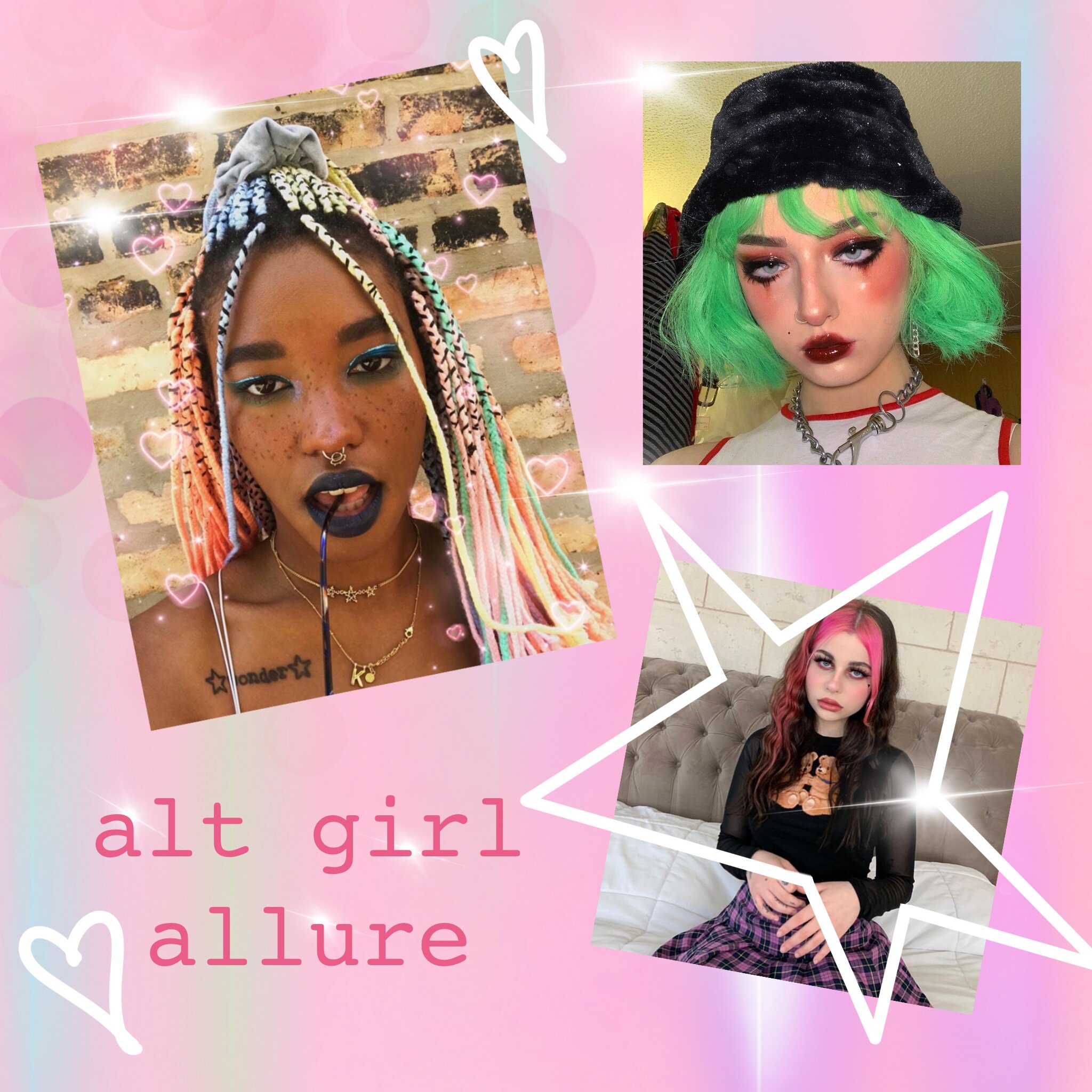Alt Girl Allure
left @vynique.moon, top right @eve.frsr, bottom right @ellise
Liberal arts schools, like Emerson, engage in a culture of music that largely revolves around songs from the alternative genre. To define it loosely, alternative/indie music refers to music that challenges the mainstream. Though people like to keep it a secret, its eclectic and original sound lends to its popularity. While mostly white men occupied the genre during the majority of its existence, the number of women that emerged in the alternative music scene increased significantly over the years; musicians like Lorde, Billie Eilish, and Florence + the Machine are just a few names that sought huge international success as alternative artists. But their achievements were not unprecedented. The success of such alternative female artists, or alt-girls, largely stems from their eccentricity, the nature of their music, and most importantly, their whiteness.
For alt-girls, weirdness serves as a commodity. Both Lorde and Florence Welch adopted and embraced their “witch aesthetics,” adding to the allure of their personas. Welch often dons flowy, earth-toned dresses with bell sleeves on stage, giving her a “pop witch” image. She even admitted to Vice that she once started a witches’ coven with her friends at school. Lorde, on the other hand, usually appears in dark clothing and makeup, revealing to Teen Vogue that she goes for a “goth-witch vibe,” while Vanity Fair deemed her “The Queen of Darkness.” Her eclectic dances and hand movements resembling spell casting led to a barrage of public criticism about how “weird” she looked onstage. The artists’ unconventionality earns them the influx of attention, whether from headlines or Twitter mentions, that leads to millions of streams and sales.
Billie Eilish also stands as a perfect example of commodifying eccentricity, as her refusal to submit to the status quo earned her the title of one of the most successful and recognizable artists today. Eilish’s unique style, with her neon green roots and matching long acrylics, oversized outfits, chunky jewelry, and a constant brooding expression grew into her signature look. She embodies the opposite of the manufactured female pop star, yet her music sits at the top of the charts for extensive periods of time.
Eilish’s music itself does not emulate what others deem as acceptable or typical radio music, and yet songs like “bad guy,” “you should see me in a crown,” and “when the party’s over” play constantly through every radio station. Her dark music style coupled with her soft, whispery vocals largely contrasts with her own extravagant aesthetic.
The very nature of alt-girls’ music involves one defining characteristic: sadness. Eilish’s “when the party’s over,” a song about saying goodbye to a relationship, encompasses such raw emotion demonstrated through Eilish’s melancholic, tear-inducing vocals. The track’s gruesome music video, in which Eilish drinks a dark liquid and proceeds to cry black, inky tears, also exhibits the same desolation that is heard in her voice.
Lorde, on the other hand, sings about a different kind of sadness, one that highlights what it means to experience the coming-of-age phases of our lives. Her music champions youthful vibrancy while emphasizing the difficulties of growing up and self-discovery. Songs like “Ribs” and “Team” allow listeners to either yearn for their adolescence or have a crippling fear of leaving it. Lorde’s music also does not fit the mold of a typical radio song, yet she mesmerized audiences with her single “Royals,” a song about never obtaining the insane wealth of the elite and not wanting that wealth anyway. Her airy, haunting vocals featured on every radio station in America for weeks in 2013, ironically allowing her to achieve the wealth of a “royal” herself. Even today, the single remains her top listened to song on Spotify with approximately 686.5 million listens. Both of her albums, Pure Heroine and Melodrama, amplify the dark, sad themes most alt-girls exhibit in their music.
In an ideal world, one can assume alt-girls like Eilish and Lorde achieved their success solely through their talents and quirks. However, what lends to alt-girls’ successes largely center on their whiteness. In general, alternative/indie music hosts a roster of mainly white artists. The genre seems to exclude people of color and Black people because when these artists try to enter the alternative music scene, their music ends up classified as something else. Whiteness often serves as an expected characteristic in alternative artists, and it limits the access of Black people and people of color who want to get into the genre. As for alt-girls, young white women have the ability to capitalize on their quirks because audiences deem it more consumable, at the same time dismissing and belittling non-white women for showing their quirks as well. While we commend artists like Lorde, Welch, and Eilish for their success, we should also steer our focus towards popularizing alt-girls of color.

